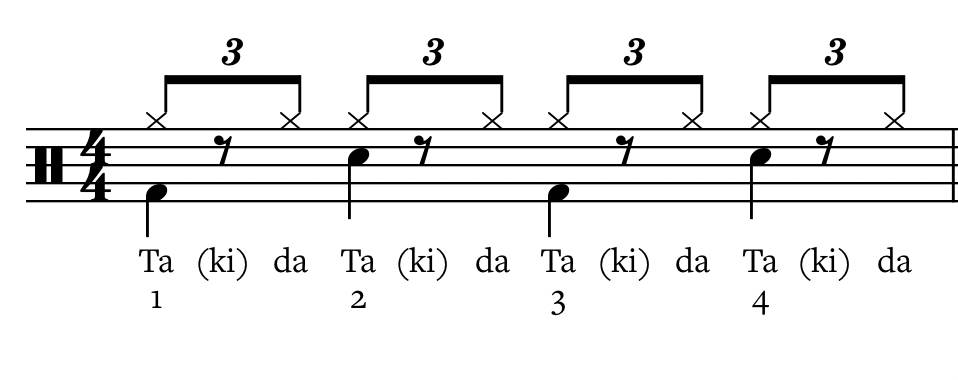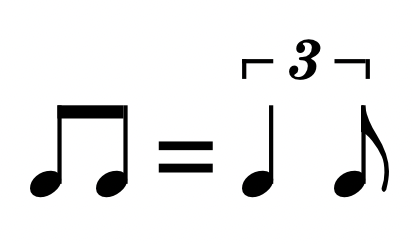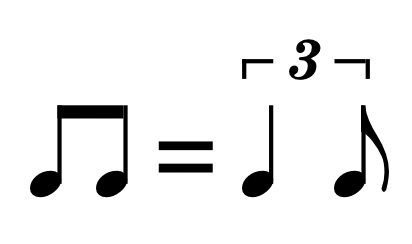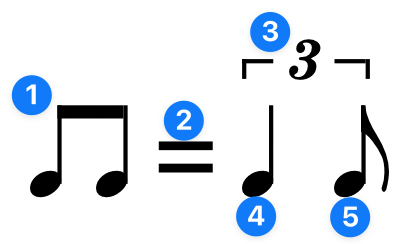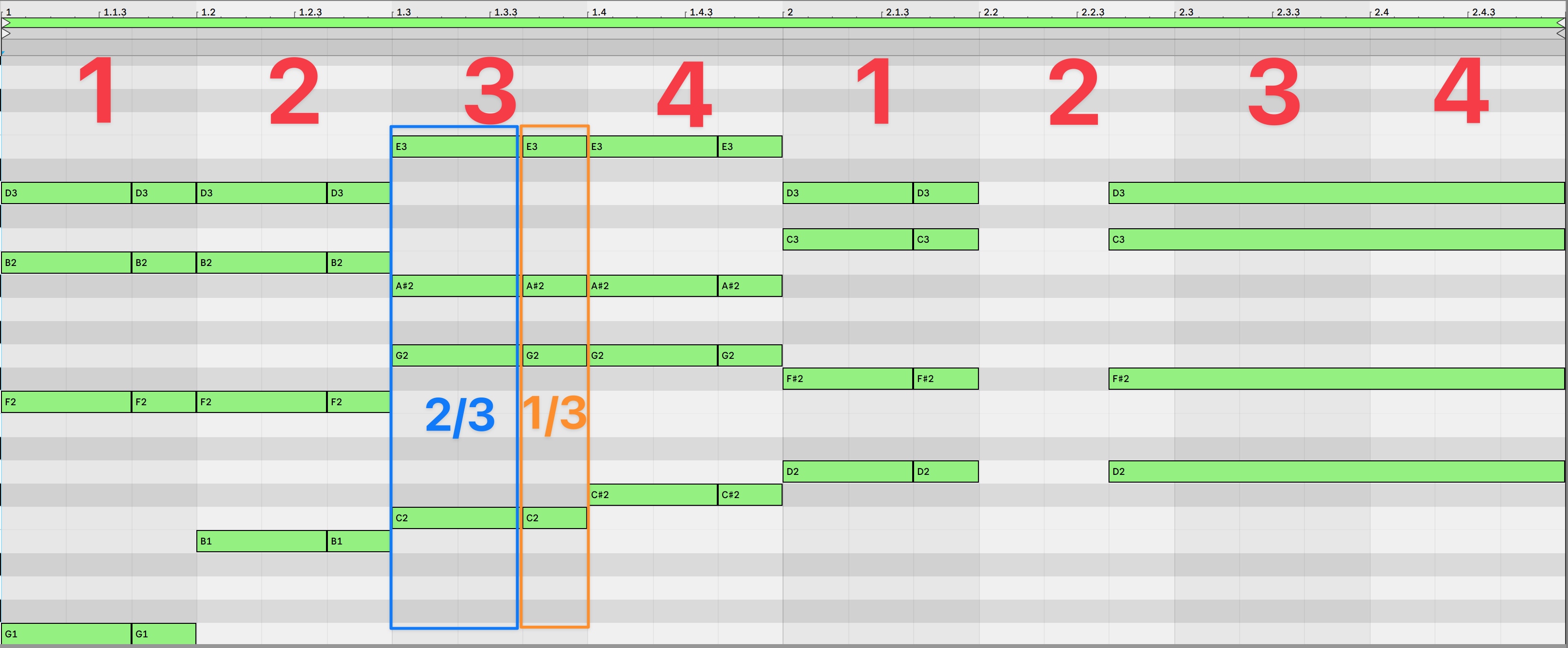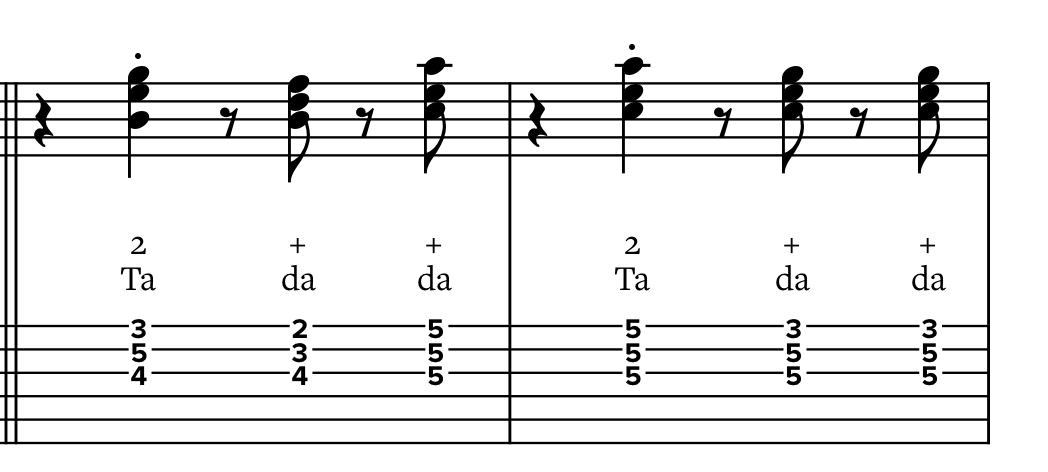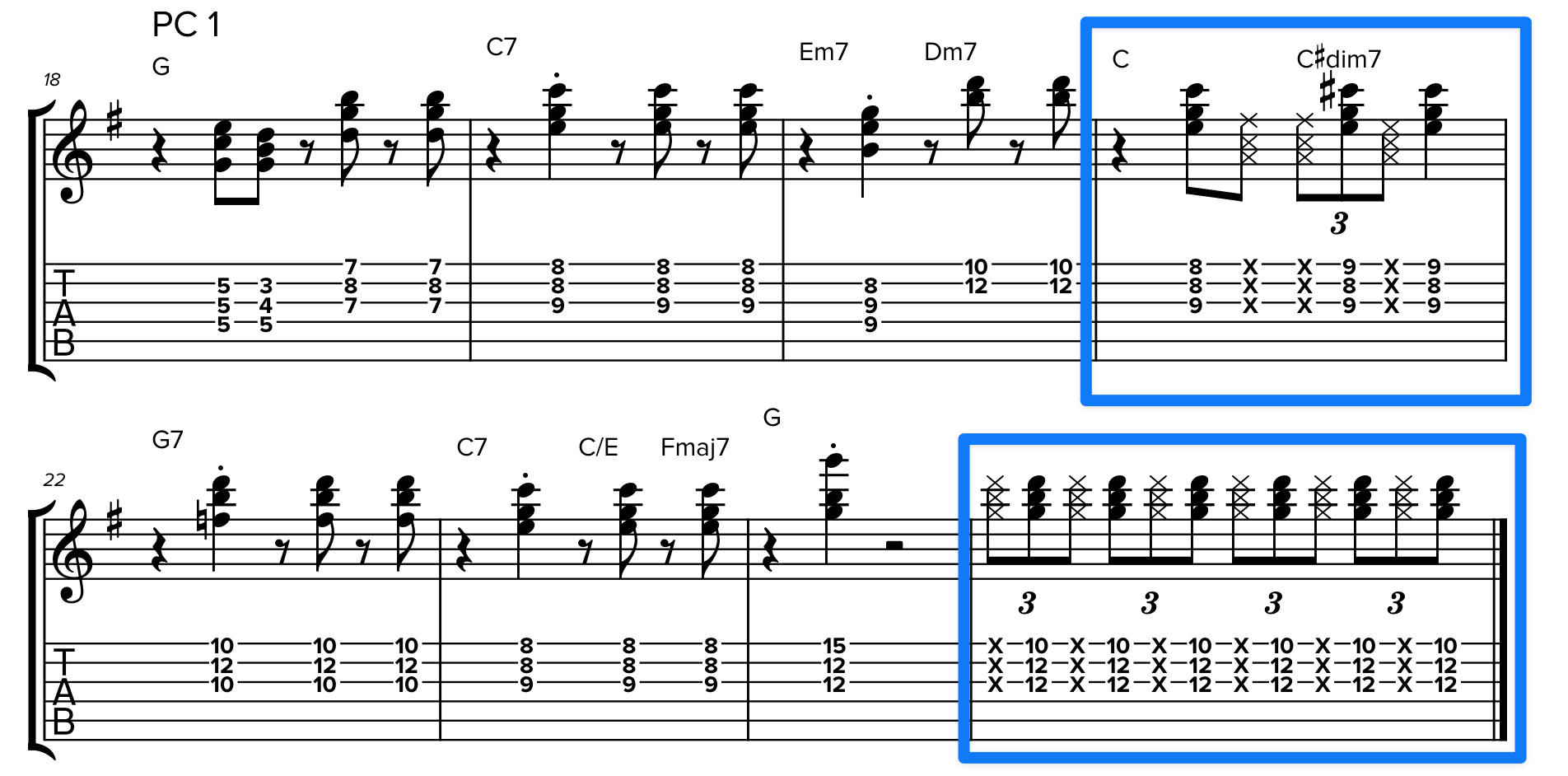RhythmOS 3-6: The Shuffle
What the heck is a shuffle anyway?
It’s a rhythm where the triplet is played (or implied) on every beat.
But those are just words. We need to hear it.
Let’s build one, piece by piece, from scratch.
Start with the basics:
- kick on 1 & 3
- snare on 2 & 4
The “normal” way to divvy up each of these beats is by dividing them into two equal pieces—8th notes:
- kick on 1 & 3
- snare on 2 & 4
- hi hat on 1+2+3+4+
But we could also divide that beat up into triplets:
- kick on 1 & 3
- snare on 2 & 4
- hi hat on Takida Takida Takida Takida
What if we deleted the middle hi hat note from each triplet?
We’d get the world’s most basic shuffle:
It’s a fairly simple beat, but visually it’s so busy.
I get a little crosseyed looking at it.
But we can replace this…
…with this…
…simply by adding this:
Let’s parse this symbol.
It’s saying:
- When you see two 8th notes…
- …play them as if…
- …we divided the beat into three equal pieces…
- …and gave the first TWO thirds to the first note…
- …and the remaining third to the second note.
Like so much of what we do here, it’s tricky to talk about, but easy to hear.
Because we’ve been demonstrating the shuffle with drums—which have no sustain—we’ve missed out on the 2/3 to 1/3 ratio.
Let’s hear it with piano added to the mix:
When you see them written in notation, they’re just 8th notes.
When you see them on the piano roll, the 2/3 to 1/3 ratio gets a lot clearer:
Shuffle vs Swing—what’s the difference?
To answer this, first we have to define swing.
What’s swing?
Any time we play uneven 8ths—where the first half of the beat is longer than the second half—that’s swing.
How much longer is the first 8th note?
- This is where people get stuck in the weeds.
- The amount of swing changes from person to person, from song to song, and from phrase to phrase.
- You can have “light swing” and “heavy swing” and even swung 16th notes.
- You can play swung against straight or straight against swung.
- Different countries & regions have their own swing.
- Swing has all the variability of the human race.
Shuffle, on the other hand, is a style of swing that’s based off the triplet.
The triplet gives it a defined amount of swing—a 2:1 ratio.
And the triplet is never far—even when it’s not being explicitly played, it’s being implied. (ie You can count Takida Takida Takida Takida even if no one is playing a triplet right at that moment.)
Enough with all this talking, let’s get to the examples.
Your Precious Love – Marvin Gaye & Tammi Terrell
It’s definitely not the drummers who’re giving us the shuffle feel—during this whole intro section, they only play snaps & hats on 2 & 4.
The triplet-heavy unison riff played by the guitar & bass is what gives us that shuffle feel—the played (or implied) triplet on each beat.
- Count it:
- Hit play.
- Tap your foot on the beat.
- Count the takadimi syllables.
- Clap or tap the rhythm with your picking hand.
- Then try it on guitar:
- “View full version”
- loop measures 2 & 3
- get that riff down before working on its variations
Longview – Green Day
Shuffles aren’t just for blues & Motown—they can RAWK.
I pitched up the audio on this so you wouldn’t have to detune.
- Count it:
- Hit play.
- Tap your foot on the beat.
- Count the takadimi syllables.
- Since we’re trying to hear the triplets even when they’re only implied, count Takida Takida until you can hear it
- then switch to Ta da Ta da Ta da Ta da
- Clap or tap the rhythm with your picking hand.
- Then try it on guitar:
- “View full version” to slow it down or loop it
Heartache Tonight – The Eagles
Here’s one where the triplet is implied much more than it’s played.
Two guitars in the transcription make it a little cramped in the miniplayer, so you’ll probably want to hit “View full version.”
- Count it:
- Hit play.
- Tap your foot on the beat.
- Count the takadimi syllables.
- Count the explicit guitar rhythm: Ta da Ta da Ta da Ta da…
- …switching in the implied Takida every couple bars
- Clap or tap the rhythm with your picking hand.
- Then try it on guitar:
- the verse part has some wide stretches
- if those are challenging, don’t try to reach up from your index on the 3rd fret
- instead, start with your pinky on the 8th fret and reach back
Truckin’ – Grateful Dead
Here’s a shorter example.
Fairly brisk tempo; slow it down as needed.
- Count it:
- Hit play.
- Tap your foot on the beat.
- Count the takadimi syllables.
- Ta da Takida Ta da Takida
- Then try it on guitar:
- “View full version” to slow it down & loop it
How Sweet It Is (To Be Loved By You) – James Taylor
An interesting divergence between western counting & Takadimi:
- single eighth notes off the beat are still counted +
- even though they’re played on da instead of di
It’s all part of making it easy to read—once your brain is in shuffle mode, it’s going to play shuffled 8ths without thinking.
- Count it:
- Hit play.
- Tap your foot on the beat.
- Count it western style:
- 2 + +
- etc
- Then try it on guitar:
- “View full version” to slow it down & loop it
There are a couple tricky bits with percussive strumming reminiscent of what we did in the Funk 16ths lesson (though of course with shuffle rhythms):
Take it slow & loop it and you’ll get them.
